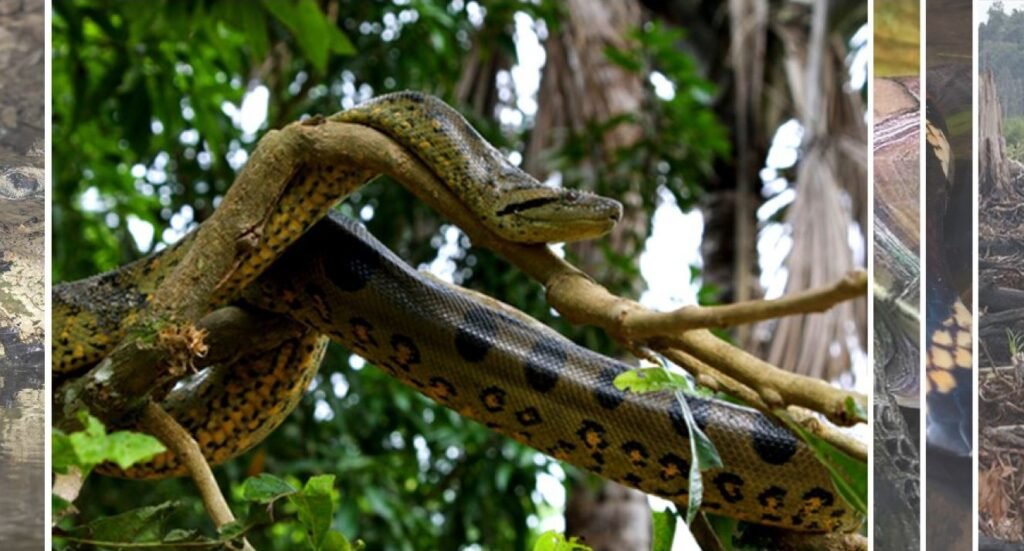The Peruvian Amazon is a treasure trove of biodiversity, and among its most captivating inhabitants are reptiles. These creatures, adapted to living in one of the planet’s most diverse ecosystems, amaze us with their shapes, colors, and adaptations. We invite you to immerse yourself in the fascinating world of reptiles in the Peruvian Amazon and discover some of the most iconic species.
1. Giants of the Waters: Alligators and Anacondas
Reptiles in the Peruvian Amazon are key players in a fascinating ecosystem. These emblematic species dominate the rivers and swamps, perfectly adapting to their jungle environment, where they play a crucial role in the natural balance.
- Black Caiman: One of the largest predators in the Amazon, the black caiman is a symbol of power and mystery. With its imposing size and dark skin, this reptile is a force to be reckoned with in rivers and lagoons.
- Green Anaconda: The longest snake in the world, the green anaconda is a master of camouflage and ambush. Its thick body and green scales make it almost invisible in the aquatic vegetation.

2. Camouflage and Adaptation: Lizards and Snakes
Reptiles in the Peruvian Amazon, like lizards and snakes, have developed incredible camouflage and adaptation strategies, allowing them to blend into their surroundings to hunt or avoid predators. Their survival skills highlight the diversity and complexity of this unique ecosystem.
- Chameleon Lizards: With the ability to change color, chameleon lizards blend into their surroundings to stay unnoticed. Their sticky tongue allows them to capture insects with great precision.
- Coral Snakes: Although small, coral snakes are extremely venomous. Their bright red, black, and yellow rings serve as a warning to their predators.

3. Hidden Treasures: Turtles and Tortoises
Among the reptiles in the Peruvian Amazon, turtles and tortoises stand out as hidden treasures, essential to the region’s biodiversity. These fascinating creatures find refuge in rivers and beaches, where they play a vital role in the ecological balance of the Amazon ecosystem.
- Taricaya Turtle: This river turtle is an endangered species due to hunting and habitat loss. Its shell is used to make crafts, which has put its survival at risk.
- Mata Mata Tortoise: With its flat shell covered in algae, the mata mata tortoise perfectly camouflages itself at the river’s bottom. Its leaf-shaped head allows it to ambush its prey.

4. Poison and Color: Poison Dart Frogs
Although not reptiles, poison dart frogs share the Amazon habitat with them, standing out for their vibrant colors and powerful toxins. These small but striking creatures are a reminder of the surprising biodiversity and unique adaptations of the jungle.
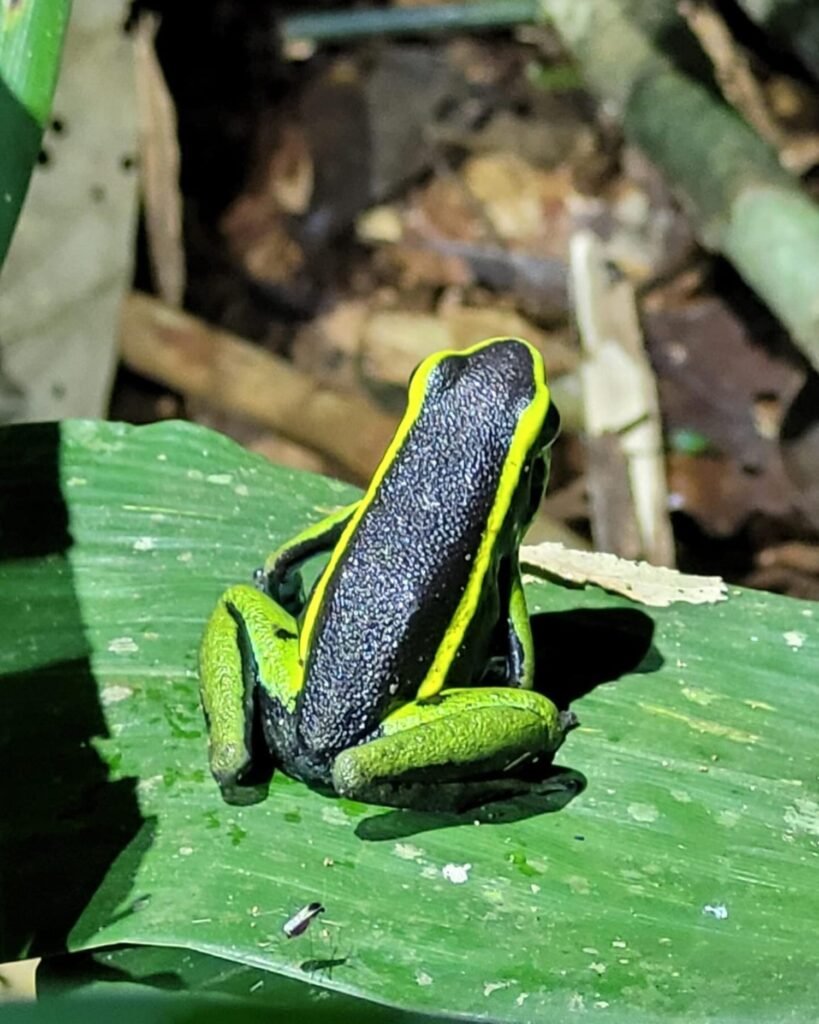
5. Threats and Conservation
Reptiles in the Peruvian Amazon face various threats due to deforestation, illegal hunting, and climate change. Conserving these species is crucial to maintaining the region’s ecological balance, and protective efforts are vital to ensure their survival in an increasingly vulnerable environment.
- Habitat Destruction: Deforestation, mining, and agriculture are the main threats to Amazon reptiles.
- Illegal Hunting and Trafficking: Many reptiles are hunted for human consumption, traditional medicine, and the pet trade.
- Importance of Conservation: It is essential to protect the habitats of reptiles and promote sustainable practices to guarantee their long-term survival.
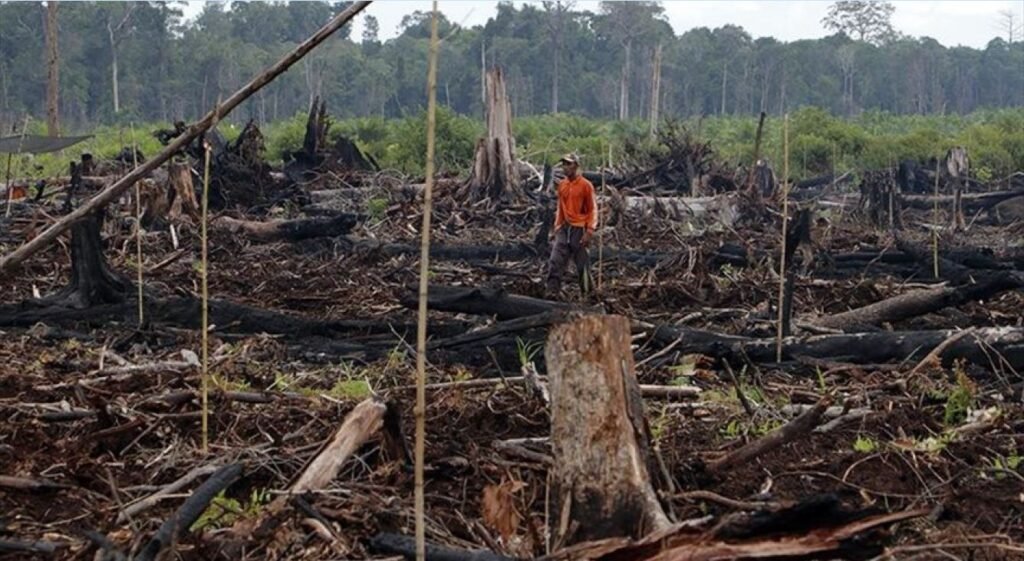
How to Observe Reptiles in the Amazon?
Observing reptiles in their natural habitat is an unforgettable experience. Here are some tips:
- Hire a local guide: An expert guide will take you to the best places to find reptiles and provide valuable information about their behavior and ecology.
- Be patient: Reptiles are often shy creatures and camouflage easily. Take your time to observe your surroundings carefully.
- Respect their space: Avoid disturbing or handling reptiles. Observe from a safe distance and don’t touch them.
- Wear appropriate clothing and footwear: The jungle is a humid place full of insects. Wear light-colored clothing, insect repellent, and trekking boots.
Recommendations for Travelers
- Travel in groups: The Amazon is a remote place, and it’s recommended to travel in organized groups with experienced guides.
- Pack the essentials: Bring a backpack with everything you need to spend several days in the jungle, such as water, non-perishable food, a flashlight, a first aid kit, and a camera.
- Protect the environment: Don’t leave trash, respect local flora and fauna, and avoid buying products made from endangered species.
The Peruvian Amazon is home to an incredible diversity of reptiles, each with unique and fascinating characteristics. By learning about and valuing these creatures, we can contribute to their conservation and ensure that future generations can enjoy this natural wonder.
Frequently Asked Questions
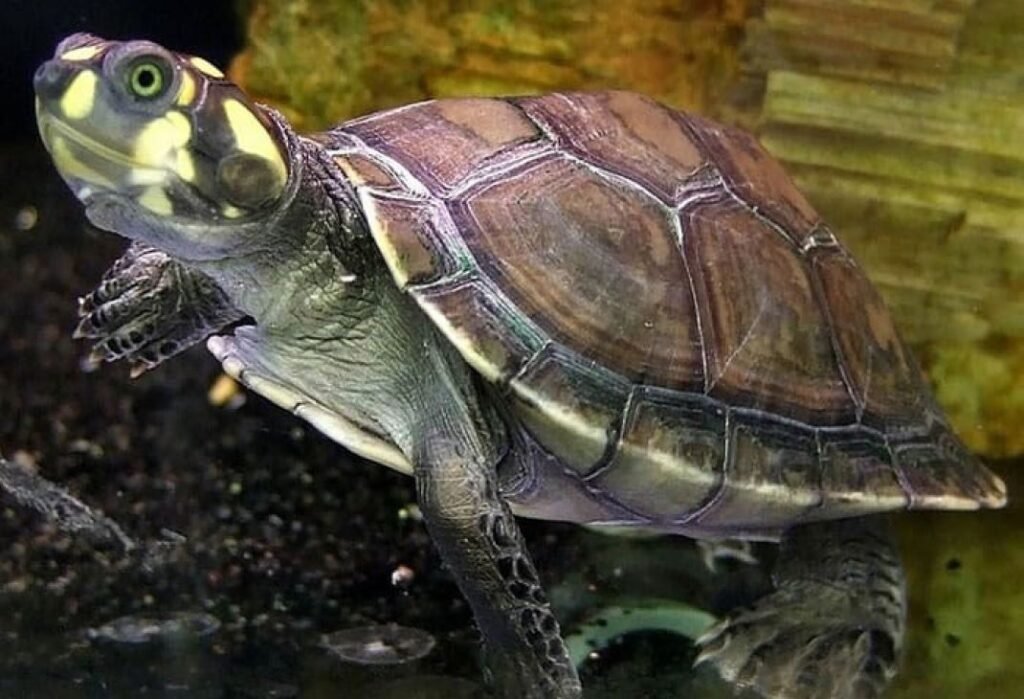
1. What are the largest reptiles in the Peruvian Amazon?
The black caimans and green anacondas are two of the largest reptiles in the Amazon.
2. Are all reptiles in the Amazon dangerous?
Not all reptiles in the Amazon are dangerous. Most species are harmless to humans and will only defend themselves if they feel threatened. However, it’s important to know which species are venomous and take the necessary precautions when exploring the jungle.
3. Where can I find more information about Amazon reptiles?
You can find more information about Amazon reptiles in books, documentaries, conservation organization websites, and scientific databases. You can also consult with local guides and herpetology experts during your visit to the Amazon.
4. Are there specialized tours for reptile watching in the Amazon?
Yes, several tour operators offer specialized reptile-watching tours in the Amazon. These tours are usually guided by herpetology experts and allow you to get up close to the region’s diverse reptiles.
5. What is the importance of reptiles in the Amazon ecosystem?
Reptiles play a fundamental role in the Amazon ecosystem. They are both predators and prey for other species, help control insect populations, and assist in seed dispersal. They are also indicators of the ecosystem’s health.
6. What should I do if I find an injured reptile in the Amazon?
If you find an injured reptile, do not attempt to handle it on your own. Contact a local guide, park ranger, or conservation organization for advice on how to proceed.
7. What are some of the most emblematic reptile species in the Peruvian Amazon?
In addition to the black caimans and green anacondas, other iconic species include the taricaya turtles, chameleon lizards, coral snakes, and poison dart frogs.
8. Can I have an Amazon reptile as a pet?
It is not recommended to keep Amazon reptiles as pets, as many species are protected by law and their capture and trade are prohibited. Additionally, these animals have specific needs that can be difficult to meet in captivity.
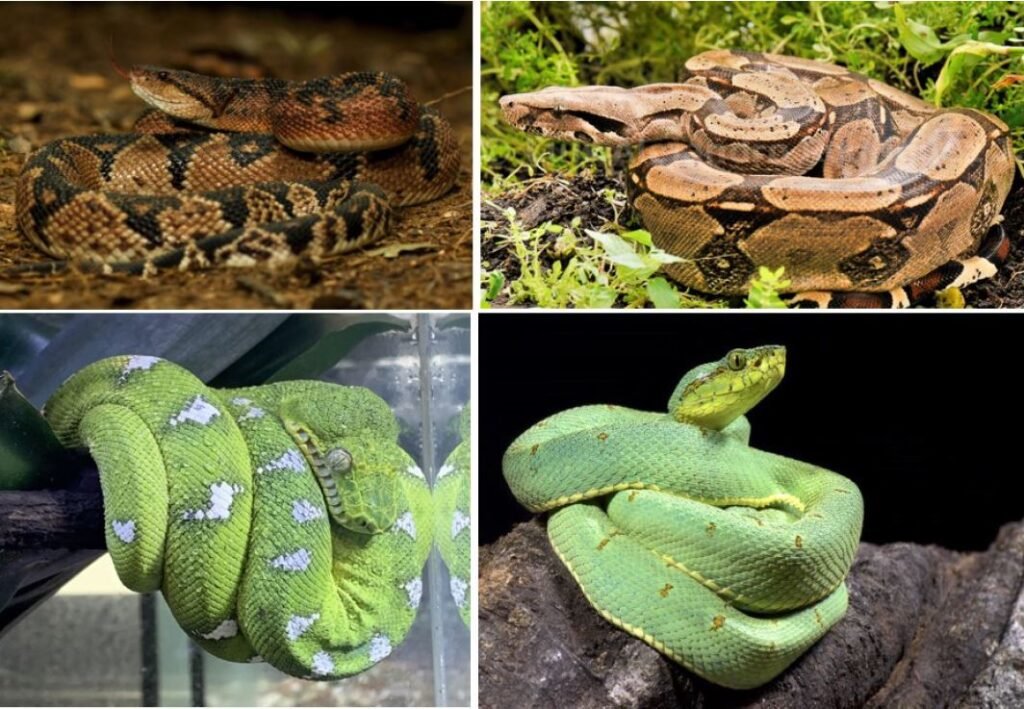
Want to have an unforgettable experience in the Amazon and discover the fascinating life of reptiles? Lorenzo Expeditions invites you to explore the Peruvian jungle with expert guides. We offer personalized tours that will allow you to observe caimans, anacondas, turtles, and many other species in their natural habitat.
Why Choose Lorenzo Expeditions?
- Unique experience: Our guides will take you to remote locations and show you the beauty of the Amazon jungle.
- Expert knowledge: You will learn about the ecology, behavior, and importance of reptiles in the ecosystem.
- Commitment to conservation: We support conservation projects and promote sustainable tourism.
- Comfort and safety: Our tours are designed to ensure your comfort and safety throughout the adventure.
Don’t wait any longer and book your tour now!

